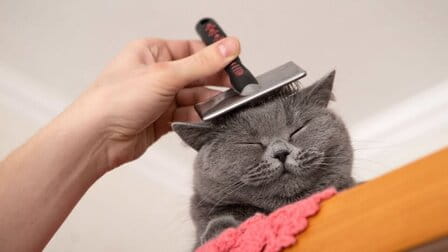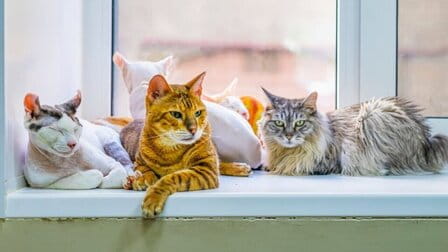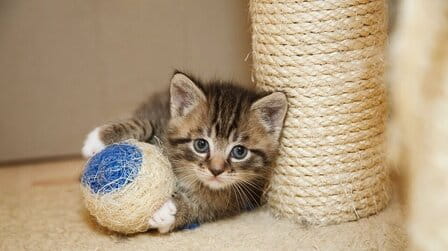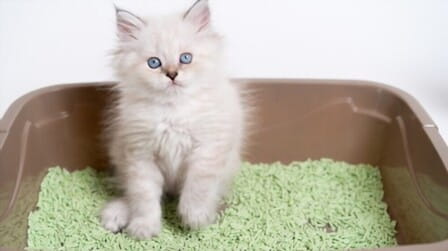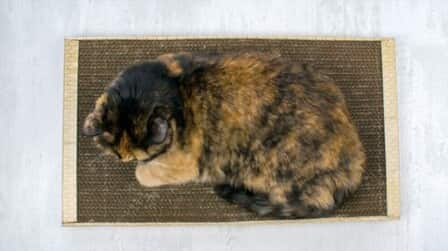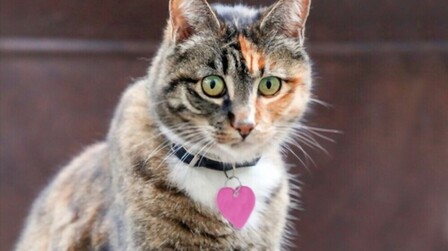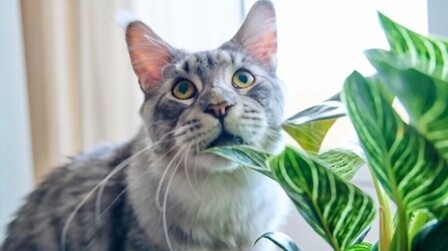Cats' sociable nature is largely responsible for their sleeping habits. Cats can socialize and develop relationships with other animals. They use sleep as a means to get warmth from their own bodies or outside sources. This is what causes cats to sleep on you, next to you, or near other domestic animals. Cats' different sleeping positions also reflect their ancestors. Cats used to be predators and prey, so their survival whether in the wild or outdoors depends on them being aware of things. Cats are extremely sensitive with this. Your cat will often curl up in a ball when it's bedtime because they know you're constantly watching them. Also, different sleeping positions reflect different moods, let's take a look at how cats sleep.
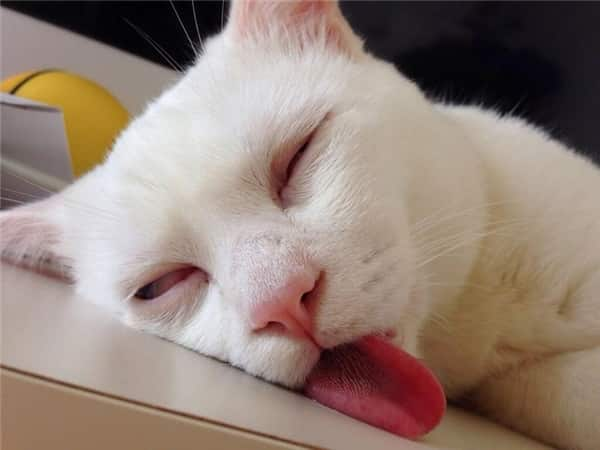
Discover the cat's sleep
If you are a real cat lover, you will probably picture your sleeping cat in your head. One could say that a cat spends all day sleeping and eating. Statistics show that cats usually sleep between 13 and 16 hours a day. And to help you answer that question and learn more about cat sleep, join us.
Cats can sleep in three distinct ways during the day, including naps, extended naps, and deep naps. But that depends on the cat's age, which is a significant influence in deciding how much sleep they get.
Baby kittens can snooze for up to twenty hours every day. In addition, kittens have excellent sleep habits and rarely switch positions when sleeping. This issue does not surprise many people because cats are naturally sleepy.
With regard to adult cats, as they have grown older, cats' typical daily sleep duration has also slightly decreased. However, it also makes up 60% to 70% of each day's hours. Following the monitoring process, statistics show that cats only sleep for 10–16 hours every day.
However, if you notice your cat sleeping longer than that or just being still all day, you should have their health checked because they could be ill or exhausted.

Cat sleep time
Cats are hunters, so they usually sleep the most during the day and stay awake most at night. Therefore, you should learn to understand the difference between you and your pet cat when raising one.
We may sleep all day after an unpleasant night, may just wake up to eat and then go back to sleep. In addition, this is a file that includes not only domesticated animals, but also all other breeds of cats in the lion family.

Cat sleeping positions with the meanings
1. Ball-like curled up
Cats typically sleep in a wonderful ball-like shape with their noses tucked under their tails. This is the sleeping position that you will see the most. Being in this position will enable cats to maintain body heat since they want to be warm. Additionally, by maintaining this position, the vital organs inside the abdomen are better protected.
2. Lying on top of you
Chances are, you've observed your cat dozing on her back while her front legs are crossed over her belly or reaching over her head with her belly fully exposed. Cats naturally cover their sensitive internal organs while sleeping, so it's a sign of absolute confidence and security if they do. While your cat may feel safe, you shouldn't try to stroke their belly while they're in this position. Because the belly skin is so delicate, most cats will still try to defend themselves when petted.
3. Lying close by
Cats also enjoy stretching out their legs when lying on their sides. A cat's critical organs are accessible in this position, just as they are when they are sleeping on their backs. This indicates that your cat is quite secure and at ease.
However, cats who sleep on their sides will find it simpler to get up and move if necessary. This stance will allow them to change positions more quickly and feel more safe while sleeping because they are both hunters and prey.
4. Have a straight back as you sleep.
Cats who sit up straight and appear to be attempting to mimic people can be amusing, but it's also an indication that they are comfortable in their environment. Because they feel protected, cats who sleep inside a sitting position without their bellies exposed do so.
Cats may also brush their bellies more easily and with less effort when they are sitting up, in between naps. They can use this as a means of support for their back muscles as well, which will ease any strain placed on it during hair-brushing.
5. Sleep on your feet
Cats can both warm your feet while they sleep at your feet and come to you for warmth. They feel safer sleeping in this position.
6. Sleeping in a box
Cats need a place to hide from other predators because they are predators. This explains why people seem to have a particular attraction to empty cardboard boxes. Similar to human camping tents, boxes provide safety and warmth for cats while allowing them to get out easily and keeping them alert to their surroundings. Cats are looking for safety as they try to fit a box that seems too small.
7. In the blanket
If your cat prefers to sleep wrapped with a blanket, they might be benefiting from the warmth, comfort, and familiarity of your fragrance.
Cats, who can be highly sensitive to noise, can escape distressing stimuli by cuddling up in a blanket. Additionally, some cats enjoy the comfort of being covered in a blanket. Although it's commonly accepted that cats can crawl under beds or sheets without getting hurt, constantly keep an eye as to where the cat is just so you do not even unintentionally sit on them.

Some reasons cats sleep a lot
Use less energy
Cats snooze a lot because they may fall asleep quickly. Furthermore, the cat will have more energy if it sleeps more during the day. And after it's dark, they begin to hunt like their kin. Although cats have been domesticated and have sweet, docile attitudes, they nevertheless require a great deal of energy to workout, go about and leap around.
Change Weather
In addition, the weather has an effect on a cat's sleep. It is also true that besides cats, anyone can doze off on a cold, wet day. In addition, cats are extremely afraid of water, so when it rains, they cannot go out to play all day; instead, we have to stay indoors yawning, dozing, and getting ready to go to sleep.
Golden time
During particular moments, such as lovely sunsets or late evenings until morning, cats will be active. The cat will sleep more the remainder of the day in order to store more energy. But domestic cats will snooze more than feral cats.

How to get your cat go sleep with you
- Allow your cat to exercise throughout the day. To support their activity, you should first find and purchase some cat toys, including cat fishing rods, balls, and more. Alternatively, you can help them make friends with people they can play on their own, or you should play with them yourself. However, if you want to give them more energy so they can be more active, you should buy some more ice cream and snacks.
- Giving your cat a substantial supper before bed will improve the quality of its nighttime sleep. But because cats enjoy curling up under a soft blanket, you should make sure they have a warm, cozy area to sleep.
- Additionally, you should thank the cat the next day with some delectable food to lift its spirits if it sleeps with you throughout the night without making any noise.

Conclusion
Cats may sleep for up to 70% of their lives, and we know they can sleep lightly or deeply. Additionally, there are a variety of sleeping postures. Each of those positions has a specific meaning, which you must learn in order to be a good owner. Regardless of position, they still want to sleep next to you.

